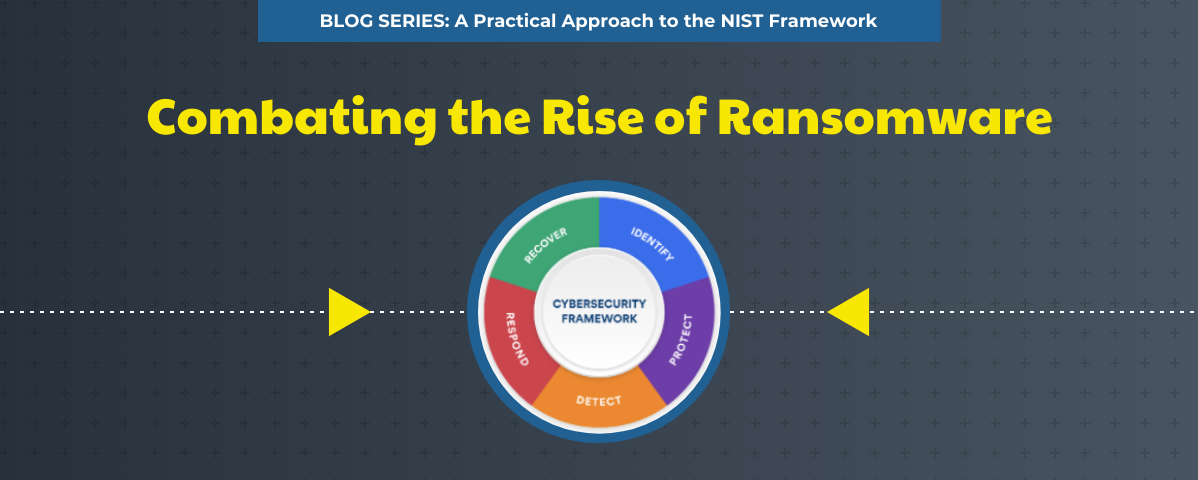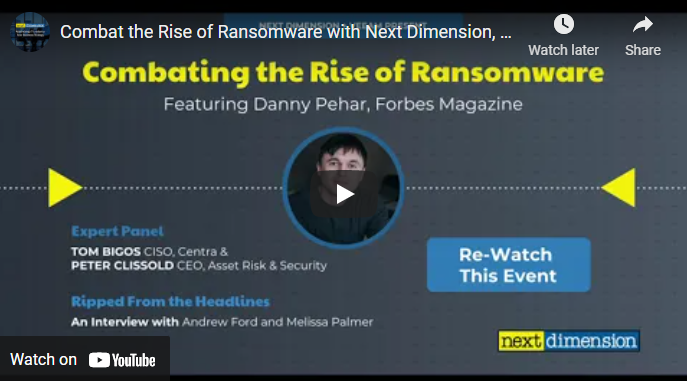Fighting Back Against Ransomware
Ransomware attacks happen. It’s not a matter of if, but when.
As long as cybercriminals believe your data has value, they’ll continue to exploit vulnerabilities and find innovative ways to encrypt critical data. We need to protect ourselves, our businesses, our revenue, our reputation – and most importantly we need to protect our data. Ransomware is malicious software (malware) used in a cyberattack to encrypt the victim’s data with an encryption key that is known only to the attacker, thereby rendering the data unusable until a ransom payment is made by the victim. With that being said, in order to understand ransomware protection, we first need to understand data protection.
The first step to ensure data protection is simply by testing to identify any vulnerabilities within your systems and applications. Every day, hackers work to steal valuable information to sell on the dark web. This can include usernames, email addresses and passwords, which can make it easy for these cyber criminals to access your network and applications. Unfortunately, It is very likely that your corporate data has already found its way onto the dark web. Somewhere along the line, users at your organization A dark web scan is a great place to start for that, a dark web scan can track whether there has been mention of your business passwords, username, and other connected business/personal information. And the benefit of completing a dark web scan is that the results can help you and your organization strengthen your security posture.
It is clear that data gets on to the dark web in a number of ways, but as we mentioned in our last blog, 95% of all breaches begin with some form of human error.
It is clear that data gets on to the dark web in a number of ways, but as we mentioned in our last blog, 95% of all breaches begin with some form of human error, which brings us to the importance of training staff on cybersecurity practices. Employees need a framework to understand what policies are, how to detect and report concerns, and how to confidently react when a breach occurs. They want to “do the right thing”, they just need to be taught! Security must be a top priority in the organization’s culture; otherwise, staff are likely to circumvent security policies and safeguards in support of productivity. You can access our Creating a Cyber Aware Culture Ebook to learn more. Creating a cyber aware culture will only help to reinforce the importance of stringent cybersecurity policies, and will help to keep important data secure.
Losing any amount of data can be devastating, which is why backing up data is critical. Backing up your data is one of the safest ways to ensure that you’re being proactive about your data’s security. This way, if disaster strikes, you know your information still exists elsewhere. There are plenty of reasons why you should backup your data and take extra measures like storing it in more than one place. If you’re backing up business data, sit down with your team to determine what needs to be stored and how often the backups should occur. Data backup is a better safe than sorry situation.
These are only three of the many ways to fight ransomware with data protection, but they are all great ways to assess your cybersecurity posture among the dark web, your staff and within your data storage. There is an entire framework built around defending against these types of cyber-attacks that enables organizations of all sizes to discuss, address, and manage cybersecurity risk, so be sure to come back for our next blog where we take the NIST cybersecurity framework turn it on its head and share how our team of experts propose starting with the framework.


